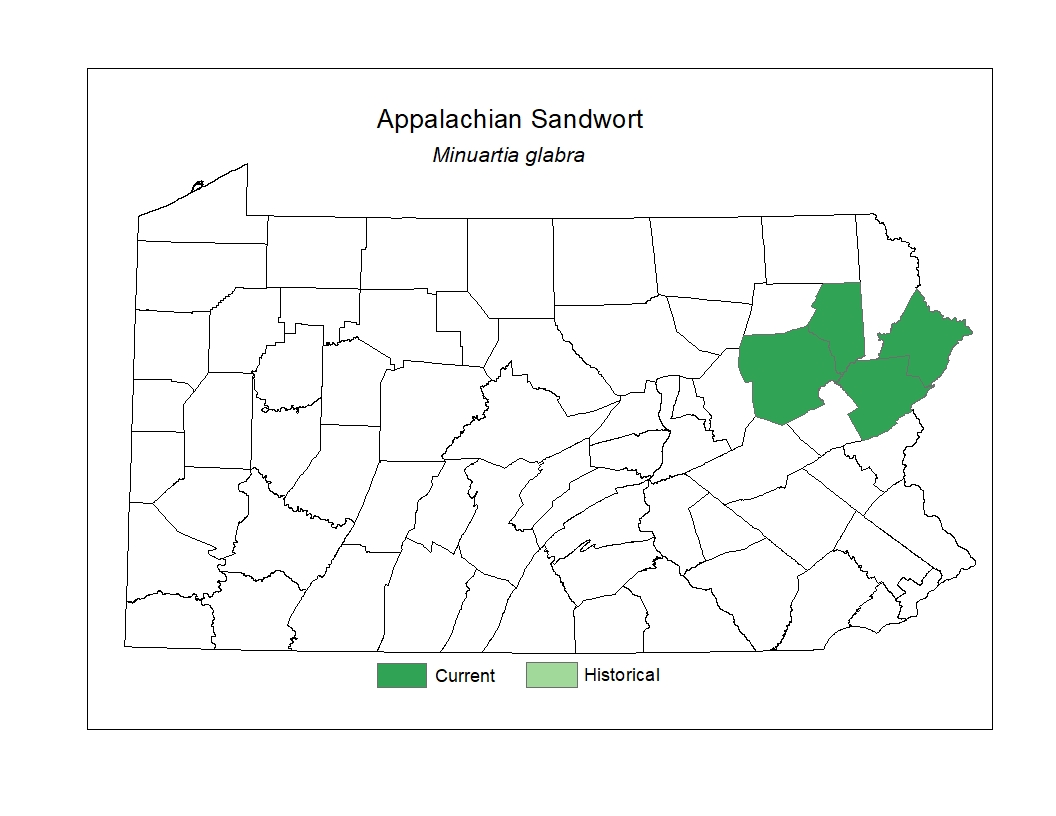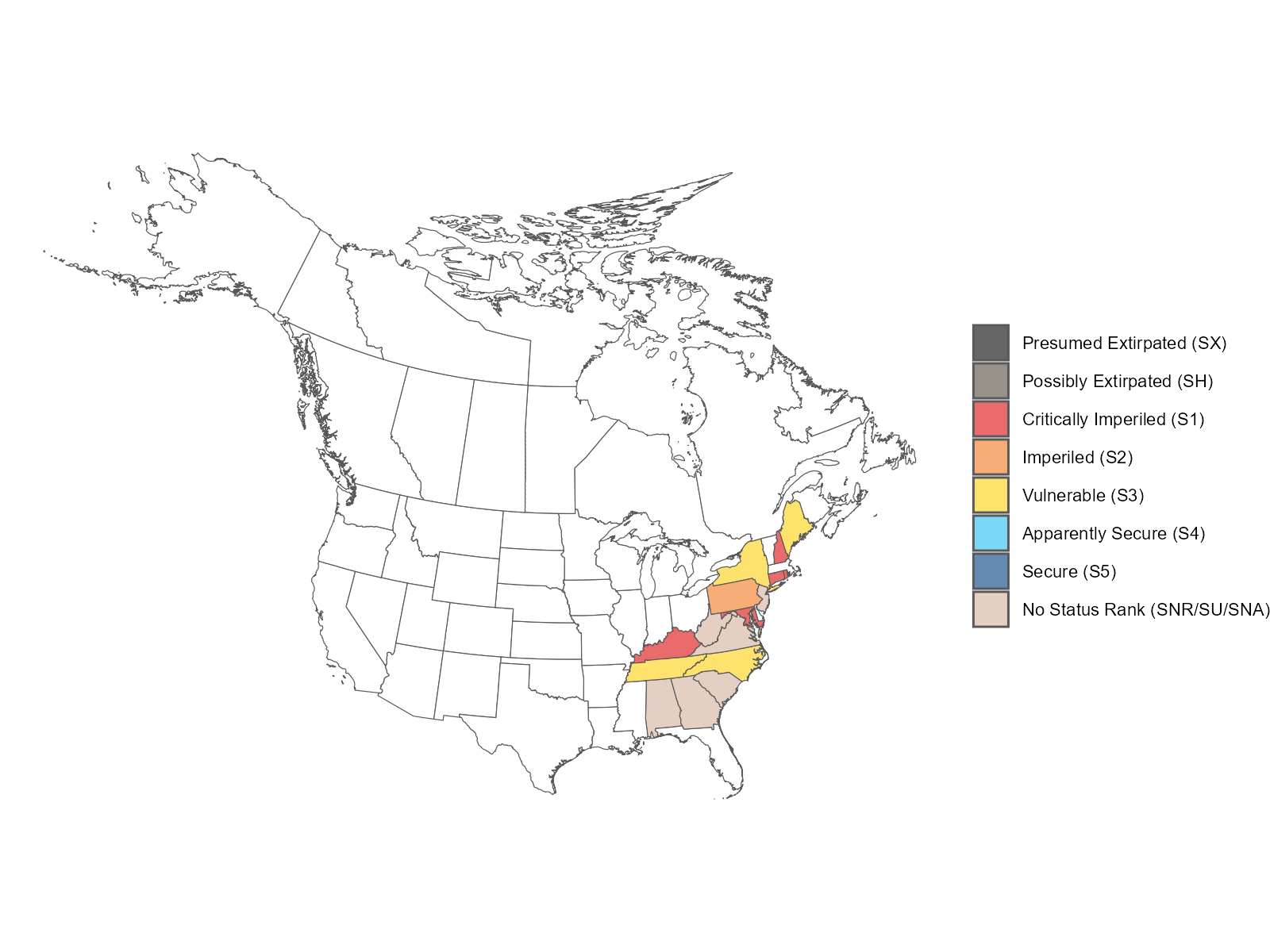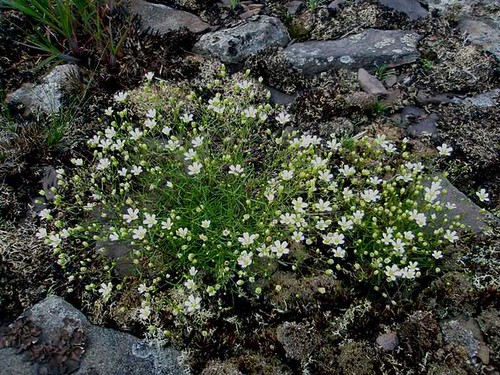 Species Factsheets
Species Factsheets
Minuartia glabra
Appalachian Sandwort
State Status: Pennsylvania Threatened (PT)
PBS Status: Pennsylvania Threatened (PT)
Federal Status:
Global Rank: G4
![]() rank interpretation
rank interpretation
State Rank: S2
Description
Appalachian Sandwort is an annual herb with slender wiry forked stems that may grow up to 15 cm in height. The leaves are oppositely arranged, linear to needle-like in shape, to 2.5 cm in length and 1-2 mm in width, and hairless. The white flowers, which appear mostly from May to July but sporadically later in the year, are aggregated in small branching clusters on the upper portions of the stems. Each individual flower has 5 petals that are about 4-8 mm in length. The fruit is a dry capsule about 5 mm in diameter that splits into 3 parts and releases the minute seeds.
Rank Justification
Imperiled in the nation or state because of rarity due to very restricted range, very few populations (often 20 or fewer), steep declines, or other factors making it very vulnerable to extirpation from the nation or state.
Habitat
The species grows on open well drained sandstone and shale bedrock outcrops and in dry open woods.
Survey Dates
Flowers May - August
Distribution
Appalachian Sandwort ranges from New England south into Georgia and Alabama. In Pennsylvania, it has been documented historically in the northeastern counties.

Threats
Some populations are threatened by loss of habitat.
Management
The largest populations of Appalachian Sandwort are situated in remote areas where the habitat is likely to be kept in a natural state. Active management, such as the use of prescribed fire, may be beneficial in maintaining these areas or in creating additional habitat.
Conservation Status Map

NatureServe. 2017. NatureServe Explorer: An online encyclopedia of life [web application]. Version 7.1. NatureServe, Arlington, Virginia. Available https://explorer.natureserve.org.
- NatureServe. 2018. NatureServe Explorer: An online encyclopedia of life [web application]. Version 7.1. NatureServe, Arlington, Virginia. Available at https://www.natureserve.org/explorer
- Pennsylvania Natural Heritage Program. 2018.
- Rhoads, A.F. and W.M. Klein, Jr. 1993. The Vascular Flora of Pennsylvania. American Philosophical Society, Philadelphia, Pennsylvania. Rhoads, A.F. and T.A. Block.
- 2007. The Plants of Pennsylvania: An Illustrated Manual. 2nd edition. University of Pennsylvania Press, Philadelphia, Pennsylvania.







